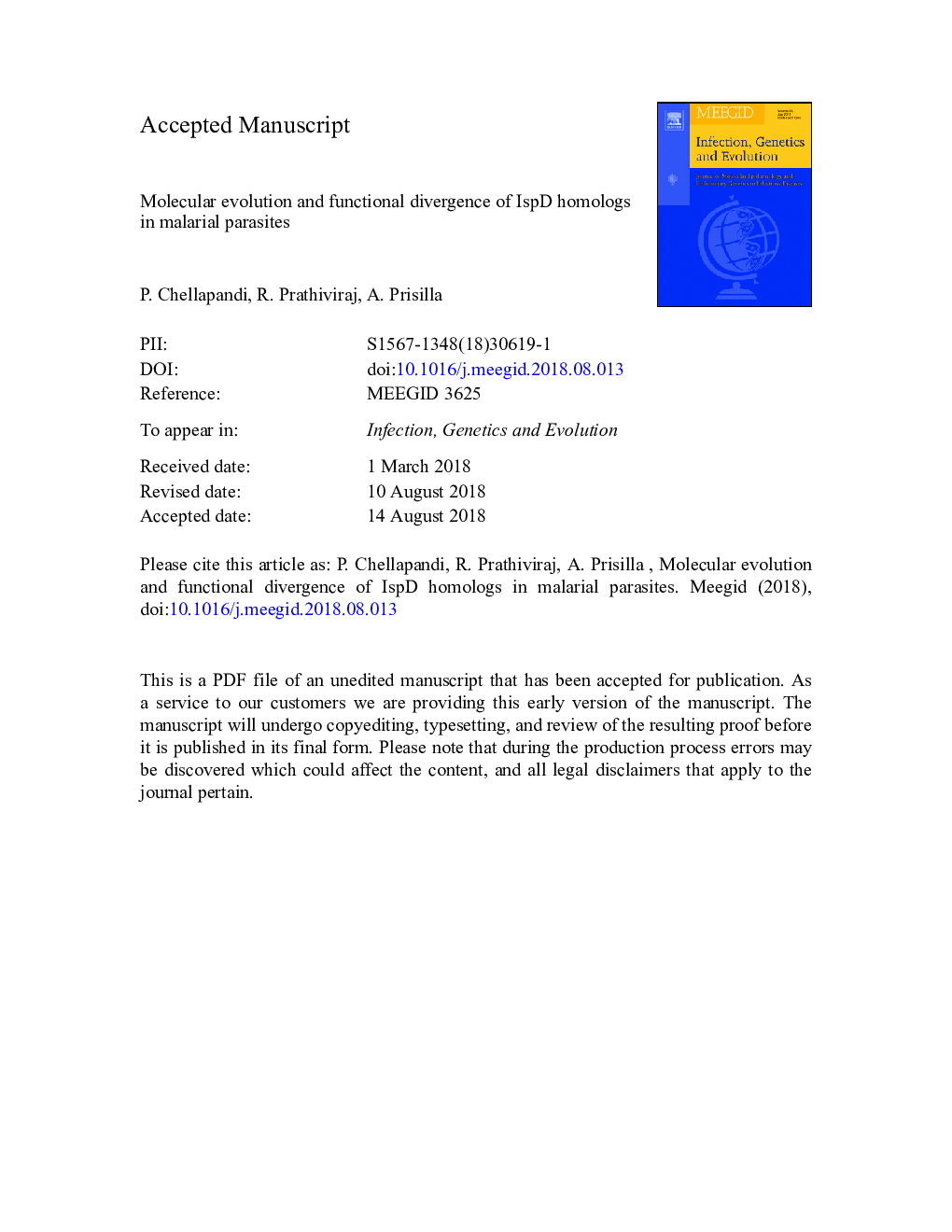| Article ID | Journal | Published Year | Pages | File Type |
|---|---|---|---|---|
| 9955342 | Infection, Genetics and Evolution | 2018 | 31 Pages |
Abstract
Malaria is one of the leading parasitic diseases to humans caused by Plasmodium falciparum. It is imperative to discover novel targets for the development of antimalarial drugs. The 2-C-methyl-D-erythritol 4-phosphate cytidylyltransferase (IspD) in 2-C-methyl-D-erythritol-4-phosphate pathway has been considered as a second in vivo off-target for antimalarial drugs discovery as its essentiality in malarial parasites and devoid in mammals. Our study was intended to reveal the molecular basis of its functional parts by inferring diversity, origin and evolution across important malarial parasites. Phylogenetic analyses revealed its conservation probability and sequence homology among bacterial IspD homologs. It also indicated that Plasmodium IspD homologs were distantly related to each other and their functional counterparts originated from different progenitor genes. Nucleotide-diphospho-sugar transferase fold and conserved domain of them might have evolved from green sulphur bacteria, whereas coiled-coil region and apicoplast targeting signal derived from protozoal origins. These homologs contained prospectively definable motifs subject to neutral or nearly neutral evolution on a scale that were diverged radically and subsequently converged in making spatial structural arrangements. Our genetic diversity analysis has shown a constructive signal for identifying the evolutionary constraints, which has imposed on their functional divergence in malarial parasites. Thus, this study provides a novel insight into our understanding of the molecular basis of the origin and evolution history of IspD homologs across apicomplexa.
Related Topics
Life Sciences
Agricultural and Biological Sciences
Ecology, Evolution, Behavior and Systematics
Authors
Chellapandi P., Prathiviraj R., Prisilla A.,
